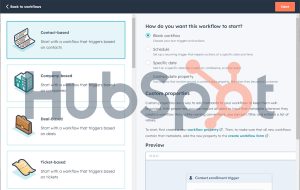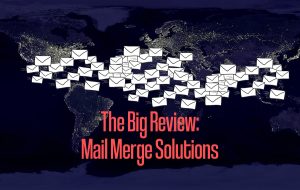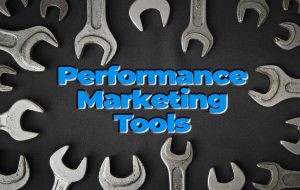The Power of Email Marketing Automation
The world of marketing is constantly evolving, and one strategy that has proven to be a game-changer for businesses is email marketing automation. This powerful tool has revolutionized the way companies communicate with their audience, driving engagement and boosting conversions like never before.
In this blog post, we will look into the significance of email marketing automation and its impact on businesses of all sizes. From saving time and increasing efficiency to creating personalized customer experiences, this technology offers a wide range of benefits that can take your marketing efforts to the next level. We will also explore the various ways in which email marketing automation can transform your business, from nurturing leads to re-engaging inactive subscribers. Whether you’re a small startup or a large corporation, understanding how to leverage automation effectively can help you streamline your marketing processes and achieve your goals faster.
Understanding Email Marketing Automation
Email marketing automation is a powerful tool that can revolutionize how businesses engage with their audience. By automatically sending out targeted messages based on specific triggers and user interactions, email marketing automation streamlines the communication process and enhances the overall customer experience.
Benefits of Email Marketing Automation
One of the key advantages of email marketing automation is the significant improvement in efficiency it brings. By setting up automated workflows, businesses can save precious time and resources that would have been otherwise spent on manual tasks.
Personalization is another major benefit of email marketing automation. By leveraging customer data and segmentation tools, businesses can create highly tailored messages that resonate with individual recipients on a more personal level, ultimately leading to higher engagement and conversion rates.
Targeted messaging is also made easier through automation. By segmenting your audience based on demographics, behavior, or interactions, you can ensure that each email is relevant to the recipient, increasing the chances of driving user actions.
Increased engagement is a natural byproduct of using email marketing automation effectively. By delivering timely and relevant content to your audience, you can foster a stronger connection with subscribers and keep them actively engaged with your brand over time.
Key Components of Email Marketing Automation
Drip campaigns are a fundamental aspect of email marketing automation, allowing businesses to send a series of pre-defined messages at strategic intervals. This helps nurture leads, onboard new subscribers, or re-engage inactive users in a systematic and personalized way.
Segmentation plays a crucial role in email marketing automation by allowing businesses to categorize their audience based on specific criteria such as demographics, preferences, or past interactions. This enables targeted and relevant communication that resonates with different groups of subscribers.
Workflows in email marketing automation are sequences of automated actions triggered by user behavior or predefined conditions. By designing workflows that guide subscribers through their customer journey, businesses can create seamless and personalized experiences that drive conversions.
Analytics are essential for measuring the effectiveness of email marketing campaigns and optimizing performance over time. By tracking key metrics such as open rates, click-through rates, and conversions, businesses can gain valuable insights into subscriber behavior and preferences to continuously improve their email marketing strategies.
Implementing an Email Marketing Automation Strategy
Before diving into the world of email marketing automation, it’s vital to set clear objectives and goals. Establishing what you aim to achieve through your automated campaigns will guide your strategy and help measure success effectively.
Setting Objectives and Goals
Defining objectives ensures your efforts align with broader business goals. Whether the objective is to increase sales, improve customer retention, or drive website traffic, having clarity on what you want to accomplish is the cornerstone of a successful email marketing automation strategy.
Building Customer Personas and Segmentation
Crafting detailed customer personas and segmenting your audience enables personalized and targeted communication. By understanding your customers’ preferences, behaviors, and pain points, you can tailor your email content to resonate with different segments, increasing engagement and conversion rates.
Creating Engaging Email Content
To capture the attention of your audience, focus on crafting engaging and personalized email content. Utilize storytelling, compelling visuals, and relevant CTAs to drive interaction and encourage recipients to take the desired action. Personalization goes a long way in building relationships with your subscribers.
Automating Workflows and Triggered Emails
Automating workflows and triggered emails can streamline your communication processes and enhance the overall customer experience. Set up automated responses based on specific triggers or actions taken by subscribers to deliver timely and relevant content. This approach saves time, ensures consistency, and nurtures leads effectively.
Implementing an effective email marketing automation strategy involves a systematic approach. By setting clear goals, understanding your audience, creating compelling content, and leveraging automation tools, you can optimize your email campaigns for success. Stay tuned for more insights on maximizing the power of email marketing automation in your business growth journey.
Measuring Success and Optimization
In the world of email marketing automation, tracking metrics and analyzing data are crucial steps to ensure the success of your campaigns. Let’s dive into the key aspects of measuring success and optimization to enhance your email marketing strategy.
Key Performance Indicators (KPIs)
When it comes to evaluating the effectiveness of your email marketing automation efforts, key performance indicators (KPIs) play a vital role. These metrics provide valuable insights into the performance of your campaigns and help you make data-driven decisions. Some essential KPIs to monitor include open rates, click-through rates, conversion rates, bounce rates, and unsubscribe rates. By tracking these metrics regularly, you can gauge the effectiveness of your email campaigns and identify areas for improvement.
A/B Testing and Continuous Improvement
A/B testing is a powerful strategy that allows you to compare two versions of an email campaign to determine which one performs better. By testing different elements such as subject lines, call-to-action buttons, images, and email copy, you can optimize your campaigns for maximum engagement and conversion. Continuous improvement is key to email marketing success. Based on the results of A/B tests and data analysis, it’s essential to adapt and refine your email marketing strategies to ensure ongoing success. By leveraging A/B testing and continuously optimizing your campaigns, you can enhance the effectiveness of your email marketing automation efforts and drive better results.
Best Practices and Tips for Email Marketing Automation
Email marketing automation is a powerful tool for businesses looking to streamline their marketing efforts and drive engagement with their audience. Let’s dive into some best practices and tips to maximize the benefits of email marketing automation.
Personalization and Segmentation Strategies
Personalization and segmentation are key elements of a successful email marketing strategy. By tailoring your emails to individual preferences and behaviors, you can significantly boost engagement and conversion rates. Advanced personalization techniques, such as dynamic content insertion based on user data, can make your emails more relevant and compelling.
Effective segmentation strategies involve categorizing your email list into distinct groups based on demographics, behavior, or engagement levels. This allows you to send targeted messages to specific segments, increasing the likelihood of conversion. Utilize tools that enable automated segmentation based on user interactions to ensure your emails are reaching the right audience with the right message at the right time.
Automation Tools and Platforms
When it comes to email marketing automation, selecting the right tools and platforms is essential. There are numerous options available, catering to businesses of all sizes and needs. Popular choices include Mailchimp, Constant Contact, and HubSpot, each offering unique features to streamline your email campaigns.
Consider your specific requirements, such as the size of your subscriber list, the complexity of your automation workflows, and your budget, when choosing an automation tool. Look for platforms that provide intuitive interfaces, robust analytics, and seamless integration with other marketing tools to enhance your automation capabilities.
Related content:
=> Marketing Automation with HubSpot
=> A Comprehensive Comparison of Mail Merge Solutions
Compliance and Privacy Considerations
In the digital age, compliance with email marketing regulations and data protection laws is paramount. Maintaining the trust and privacy of your subscribers is crucial for building long-term relationships and avoiding legal repercussions. Be sure to familiarize yourself with regulations like the CAN-SPAM Act and the GDPR to ensure your email marketing practices are compliant.
Prioritize data security and privacy by implementing measures to safeguard subscriber information and secure your email marketing platform. Obtain explicit consent from recipients before sending marketing emails, and provide clear opt-out options to respect their preferences. By prioritizing compliance and privacy considerations, you can build credibility with your audience and protect your brand reputation.
Takeaways
Email marketing automation is a powerful tool that can revolutionize the way businesses engage with their audience. By streamlining processes, nurturing leads, and personalizing content, email automation boosts efficiency and effectiveness. The benefits are clear: increased engagement, higher conversion rates, and improved customer retention.
Don’t miss out on the opportunity to leverage the full potential of email marketing automation for your business growth. Implementing effective strategies and utilizing automation tools can propel your marketing efforts to new heights. Stay proactive, stay engaging, and watch your business thrive in the digital landscape.











